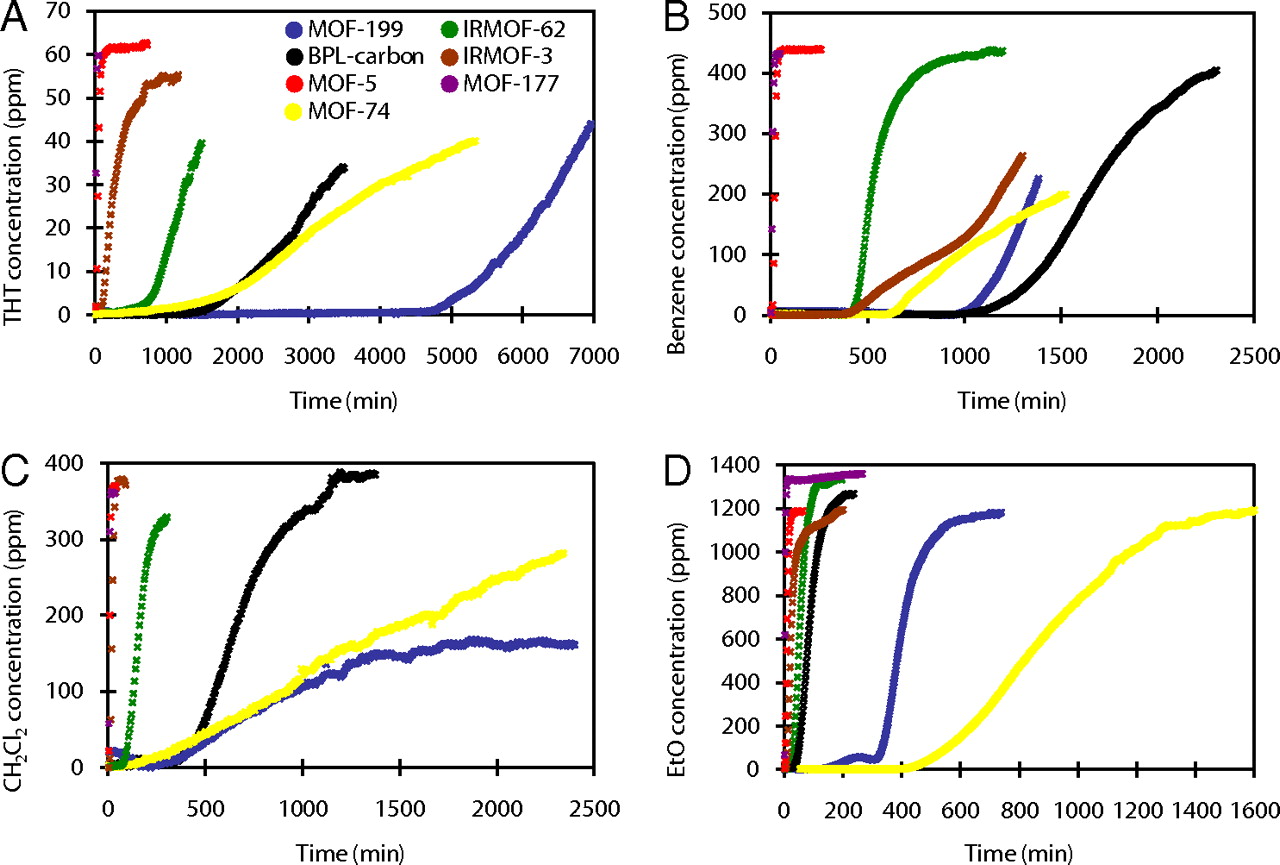Home >
News > High-Capacity MOFs for Harmful Gases
High-Capacity MOFs for Harmful Gases
Summary:
The authors from Department of Chemistry and Biochemistry, Center for Reticular Materials Research at California NanoSystems Institute, University of California, Los Angeles : developed six benchmark MOFs/IRMOFs with tunable pore functionality and high surface area, achieving excellent dynamic adsorption performance for harmful gases/vapors.

Background:
1. Harmful gas leakage poses environmental and safety risks, but traditional activated carbons have limited pore control and poor adsorption for some toxic gases (e.g., ammonia, ethylene oxide).
2. The authors proposed using MOFs with adjustable structure and reactive functionality, conducted dynamic breakthrough tests, and verified their superiority over activated carbon in most cases.
Research Content:
1. Synthesis
The authors synthesized six MOFs (MOF-5, IRMOF-3, MOF-74, MOF-177, MOF-199, IRMOF-62) via solvothermal methods with metal nitrates/acetates and organic linkers, followed by solvent exchange and vacuum activation.
2. Characterizations
1) BET surface areas range from 632 m²/g (MOF-74) to 3875 m²/g (MOF-177), with pore volumes 0.39–1.59 cm³/g.
2) No SEM/TEM particle size data provided; powder X-ray diffraction confirmed crystal structure.
3) Color change observations indicated chemisorption between MOFs and target gases.
3. Application
The materials were tested for dynamic adsorption of 8 harmful substances (SO₂, NH₃, Cl₂, CO, etc.). Key results:
- MOF-74 adsorbed 0.194 g/g SO₂ (5.88x higher than BPL carbon).
- IRMOF-3 adsorbed 0.105 g/g NH₃ (105x higher than BPL carbon).
- MOF-199 showed optimal all-round performance, with 0.351 g/g tetrahydrothiophene adsorption.
4. Mechanism
- Coordinatively unsaturated metal sites (MOF-74, MOF-199) act as Lewis acids, binding Lewis base gases.
- Amino groups in IRMOF-3 form hydrogen bonds with NH₃, enhancing adsorption.
- Pore functionality and structure determine dynamic adsorption selectivity and capacity.

Outlook:
This study establishes MOFs as promising alternatives to activated carbons for harmful gas capture, highlighting the importance of pore functionality design. It provides benchmarks for future MOF research and promotes their application in air purification.
Metal-organic frameworks with high capacity and selectivity for harmful gases
Authors: David Britt, David Tranchemontagne, Omar M. Yaghi
DOI: 10.1073/pnas.0804900105
Link: https://www.pnas.org/cgi/content/short/0804900105
The above review is for academic progress sharing. For any errors or copyright issues, please contact us for correction or removal.

